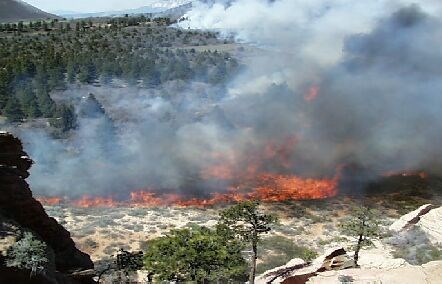
Current Fire Information Despite the evidence that fire is a necessary element in many forest ecosystems, over most of the past century people have feared and suppressed it whenever possible. Especially in the western United States , the accumulation of dead forest fuels during that time now presents extreme hazards to the health of the trees, soil, wildlife, to humans living in these areas, and to the taxpayer who has to fund the fighting of catastrophic wildfires. Over the last 150 years people at Zion have logged, grazed, farmed, lived on the land and suppressed fires. Each activity had its own impact and these impacts can still be seen today. Since this land became a National Park, our needs and priorities for it have changed. We have learned a great deal about the long term impacts of our practices in the past and are trying to reduce them wherever possible. The Zion Fire Management Program views the wise use of fire as an important tool in the effort to reduce the impacts and restore balance to our ecosystems. Fire can be utilized to shape the landscape and achieve large-scale resource goals that would otherwise be unattainable. Conversely, wildland fire can also adversely impact our resources, both natural and cultural. Wildland fire management supports park-specific resource management objectives, including a wide range of strategic options available to park managers that can be modified to adapt to the diversity of ecosystems found within the NPS. The Fire and Aviation Management Program in Zion National Park encompasses a wide variety of disciplines, all striving to apply scientifically-based research to the aspects of how wildland fire is managed in the park. The Zion Fire Management staff includes wildland engine operators, fire effects monitors, a fire communication/education specialist, a fire program management assistant, fire clerk and a fire management officer and assistant who oversees the entire program. Direction is provided by the National Park Service's Division of Fire and Aviation Management in Washington D.C. and from the NPS Intermountain Regional Office in Denver. Zion is also responsible for overseeing the fire management operations at other Colorado Plateau area parks including Bryce Canyon, Capitol Reef, Cedar Breaks, Glen Canyon, Golden Spike, Pipe Springs, Timpanogos Cave, and Rainbow Bridge. |
Last updated: August 24, 2024
